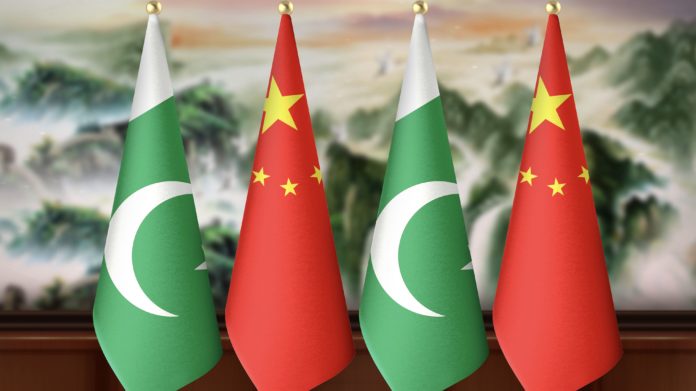The second phase of the China-Pakistan Economic Corridor (CPEC 2.0) represents a significant leap forward in the strategic and economic partnership between Pakistan and China. Building on the infrastructure and energy projects established in the first phase, CPEC 2.0 is focused on industrial cooperation, socio-economic development, agriculture, and technology-driven initiatives.
CPEC-Phase I
The initial phase of CPEC focused on infrastructure and energy developments, significantly addressing Pakistan’s persistent energy deficits and enhancing its transportation networks. Key accomplishments included the development of the Gwadar seaport, several power plants, and a comprehensive road system. These advancements not only boosted trade and mobility but also generated direct job opportunities, with estimates indicating that millions of jobs could be created by 2030. Furthermore, the strategic enhancements in energy and transport infrastructure have established a solid base for future economic activities and industrial growth, setting the stage for long-term economic advancement.
Around 36 projects with a cumulative value of 24 billion dollars have been successfully completed. Additionally, 22 projects with a total investment of $5 billion are currently under construction. (cpec.gov.pk)
Key accomplishments under CPEC-Phase I
| Energy Projects Completed | Transport Infrastructure Projects Completed | Gwadar Projects completed | Social and Economic Development Projects completed |
| 1320MW Sahiwal Coal-fired Power Plant | KKH Phase II (Havelian – Thakot Section) | Development of Port and Free Zone | Provision of Vaccine storage and transportation equipment to NDMA |
| 1320MW Coal-fired Power Plant at Port Qasim Karachi | Peshawar-Karachi Motorway (Multan-Sukkur Section) | Gwadar Smart Port City Master Plan | Poverty Alleviation Training |
| 1320MW China Hub Coal Power Project, Hub Balochistan | Orange Line Metro Train – Lahore | Pak-China Technical and Vocational Institute at Gwadar | Emergency relief supplies for enhancing NDMA, disaster preparedness capacity |
| 660MW Engro Thar Coal Power Project | Cross Border Optical Fiber Cable (Khunjrab – Rawalpindi) | Gwadar Eastbay Expressway | Pakistan Vocational Schools Equipment Upgrading and Renovation Project |
| 1000MW Quaid-e-Azam Solar Park (Bahawalpur) | Pilot Project of Digital Terrestrial Multimedia Broadcast (DTMB) | Pak-China Friendship Hospital | 50MW Sachal Wind Farm, Jhimpir, Thatta |
| 50 MW Hydro China Dawood Wind Farm, Gharo, Thatta | Hakla – D.I Khan Motorway | 1.2 MGD Desalination Plant | Provision of Medical equipment and materials |
| 100MW UEP Wind Farm, Jhimpir, Thatta | Gwadar hospital project | ||
| 50MW Sachal Wind Farm, Jhimpir, Thatta | Gwadar Desalination Plant | ||
| 100MW Three Gorges Second and Third Wind Power Project | Gwadar Vocational and Technical Project | ||
| Matiari to Lahore ±660 KV HVDC Transmission Line Project | Drinking water equipment | ||
| 720MW Karot Hydropower Project, AJK/Punjab | |||
| 330MW HUBCO Thar Coal Power Project (Thar Energy) | |||
| 1320MW SSRL Thar Coal Block-I 7.8 mtpa & Power Plant | |||
| 330MW HUBCO Thal Nova Thar Coal Power Project |
Transition to CPEC 2.0: A Broader Vision
Under the second phase of CPEC, Pakistan and China will start work on five new economic corridors with the backing of the Special Investment Facilitation Council (SIFC), a joint civil-military body established by Pakistan last year to attract foreign investment.
The new economic corridors are set to include the Innovation Corridor, Livelihood Corridor, Green Energy Corridor, Regional Development Corridor, and Employment Creation Corridor, and are aligned with Pakistan’s “5Es” development framework, which emphasizes export promotion, e-commerce development, environmental and climate change considerations, energy and infrastructure advancements, and equity and social empowerment. These new corridors are designed to target specific areas for development.
Additionally, the Innovation Corridor will drive Pakistan’s shift towards a knowledge-based economy through technological progress. The Green Energy Corridor will prioritize sustainable energy solutions, aligning with global environmental goals. The Digital Pakistan Corridor (E-Pakistan Corridor) aims to strengthen digital infrastructure, fostering economic diversification. Lastly, the Inclusive Regional Development Corridor will work to reduce regional disparities by ensuring a broader distribution of CPEC’s benefits. (Modern Diplomacy)
While the second phase of CPEC will prioritize upgrading Pakistan’s railway system, particularly the Main Line-1 (ML-1), and restructuring the Karakoram Highway, CPEC 2.0 represents a broader strategic shift by addressing industrialization, agriculture, socio-economic development, and digital connectivity. This new phase aims to bolster Pakistan’s industrial capabilities, enhance agricultural productivity, and deepen economic integration with China.
Key Focus areas:
Inclusive development: Projects under CPEC 2.0 are meticulously designed to benefit local communities by creating employment opportunities, transferring technical skills, and promoting small and medium enterprises (SMEs). In Balochistan, CPEC projects have driven infrastructural development, enhancing access to healthcare and education while empowering local communities through extensive capacity-building programs.
Special Economic Zones: A central element of CPEC 2.0 is the establishment of Special Economic Zones (SEZs) designed to attract foreign investment and drive industrial growth. Priority projects include the Rashakai SEZ in Khyber Pakhtunkhwa, the Allama Iqbal SEZ in Punjab, and the Dhabeji SEZ in Sindh. These zones are expected to generate thousands of jobs, facilitate technology transfer, and invigorate Pakistan’s manufacturing sector.
Agricultural Collaboration: Since about 40% of Pakistan’s workforce is in farming, the sector struggles with low productivity and outdated methods. China will facilitate by sharing modern farming techniques, water management practices, and agricultural technologies, to improve Pakistan’s food security and increase its exports. (EurAsia Review)
CPEC 2.0 presents a pivotal opportunity for Pakistan’s economic revitalization, though it also involves significant challenges that must be managed effectively. The success of this initiative will largely hinge on Pakistan’s ability to implement essential reforms, improve governance, and address the interests of all stakeholders. For China, the execution of CPEC 2.0 will strengthen its strategic partnership with Pakistan and highlight BRI’s potential in other regions. Both countries must collaborate closely to ensure efficient project implementation, compliance with environmental standards, and equitable distribution of economic benefits.




